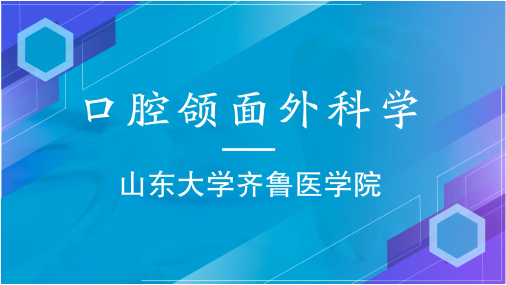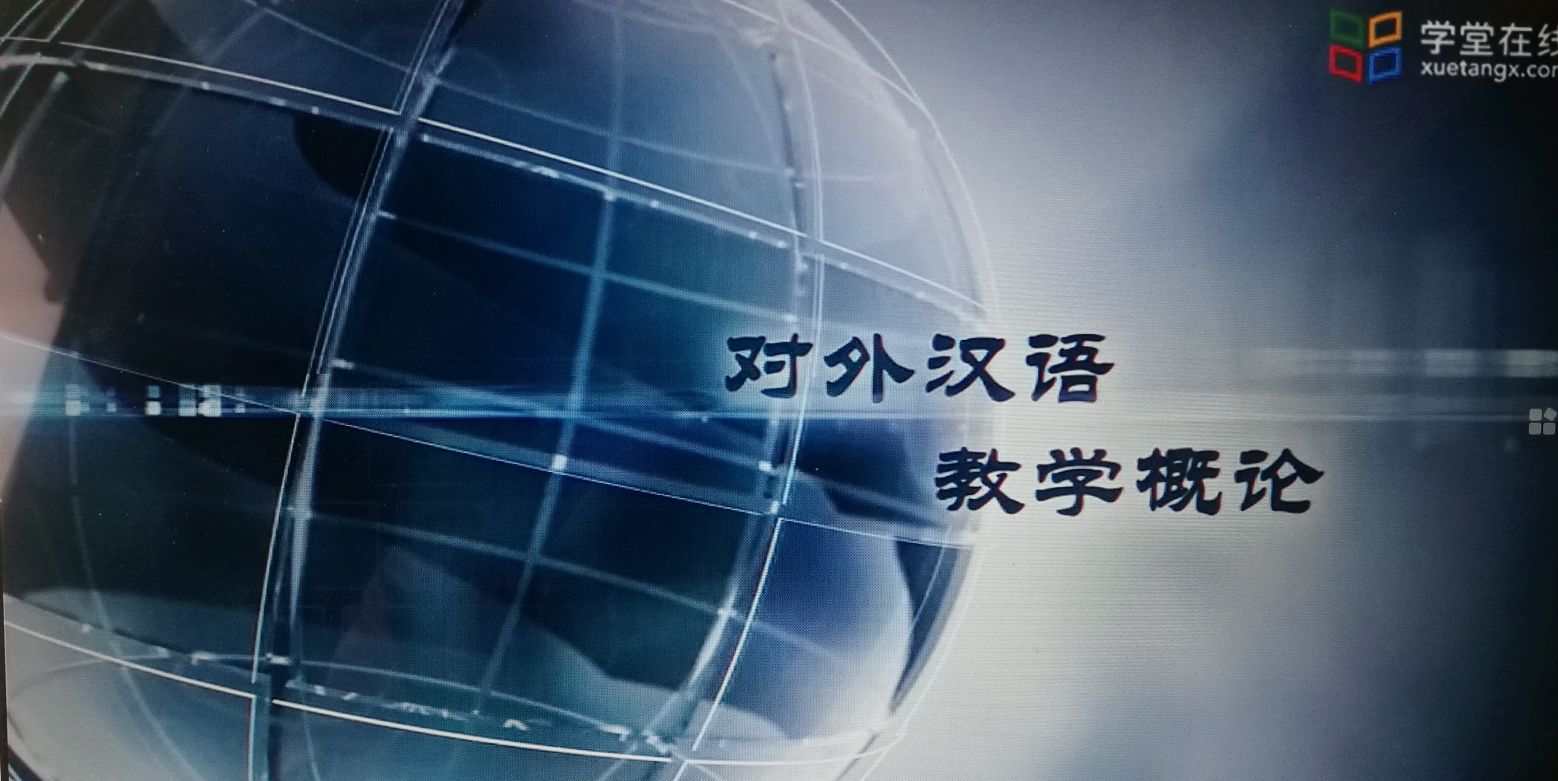
当前课程知识点:Innovation and Creative Thinking (创新与创意思维) > 13. Case Study (Selective)个案研究(选学) > Case Study: Keep-fit formula for Children (学童Keep-Fit方程式) > Case study: Acu-magnetic therapeutic for knee osteoarthritis(磁疗护膝治疗膝骨关节炎)
返回《Innovation and Creative Thinking (创新与创意思维)》慕课在线视频课程列表
Acu-magnetic therapeutic for knee osteoarthritis
磁疗护膝治疗膝骨关节炎
Professor: Amy, I just came back from a nursing home, There I saw many old people they lie in bed, were incontinent. Some of them were even demented. One thing that's really horrified with a lot of them are in pain. They revealed they had osteoarthritis. I know you have done some work in the area. Why are you interested in osteoarthritis?
教授:艾米,我刚从疗养院回来,我看到很多大小便失禁的老人躺在床上。在他们当中,有部分老人甚至是痴呆症。有一件事真的吓坏了,很多人在痛苦中,他们透露他们患有骨关节炎。我知道你在这个领域做过一些研究,你为什么对骨关节炎感兴趣?
Amy: Well, I know this disease because of my grandmother. She has suffered from the osteoarthritis on the knee, for I think nearly 20 years, and worse and worse. Everyday just stays at home, no travelling, no shopping, no social participation, so I really want to do something for her to relieve her sufferings. I began to be interested in osteoarthritis. And after I looked into this disease, I found that the prevalence of osteoarthritis is really very high, especially in the elderly.
艾米:嗯,我是因为我的祖母才得知这种疾病,在我记忆中,她患有膝关节骨关节炎已经将近有20年,而且每况愈下,每天只留在家里,没有旅行,没有购物,也没有社交活动。我想为她做点什么来减轻她的痛苦,所以我开始对骨关节炎感兴趣。在我研究了这种疾病后,我发现骨关节炎的发病机会非常高,尤其是对于老年人来说。
It could be the leading cause of disability in the elderly that highly reduced their quality of life. So now I want to do things for more people, especially the elderly with osteoarthritis on the knee. It has become my interest, and also become my responsibility, because now I am a researcher.
它可能是致使老年人残疾的主要原因。身体残疾会大大降低了老年人的生活质量,所以我想为更多的老年人做点什么,特别是膝关节骨关节炎的老人。现在,膝关节骨关节炎已成为我的兴趣,也成为我的责任,因为现在我是一名研究员。
Professor: That's very good! It sounds very good, the work that you have done. What's new about your research?
教授:非常好!你所做的事听起来非常棒!你的研究哪些是新的?
Amy: I think the biggest feature of my research is that we have developed a wearable device as a new approach for knee osteoarthritis management. It integrates the acutherapy, magnetic-therapy and also the textiles, so this function of knee brace on one hand could offer some therapeutic effect, for knee osteoarthritis relieving. On the other hand, it provides some textiles properties, like comfortable, soft, lightweight, and easier to donning on and taking off. Just like our daily wear.
艾米:我认为,我的研究最大的特色在于开发了一个可穿戴的新型膝骨关节炎管理装备。这个装备融合了针灸疗法、磁疗和纺织品,因此它的功能一方面可以在缓解膝骨关节炎上达到治疗效果;另一方面,它又拥有了纺织品的特性,比如说舒适、柔软、轻便,更容易穿脱,就像我们的日常穿着一样。
Professor: How did you come up with this idea? It sounds brilliant.
教授:你是怎么构思出这个想法的?听起来很精彩!
Amy: Actually, I came up this idea after screening some conventional treatments. And I found that traditional treatments could be divided into the pharmacological, surgical and non-pharmacological treatments. But so, for the traditional pharmacological treatments usually it associated with some side effects, like the renal dysfunction, the blood pressure elevation and some drug dependence. But for the surgical treatment it existed some high medical risks and it requires a lot on the health condition of the patients because they need to recover after the operation. So for my research topic, my target population is the elderly. They have relatively poor health condition, rich medical history and diverse drug intake. So I think the non-pharmacological treatments would be more suitable for this group of people due to its low medical risk, free side effects, long lasting effectiveness and high acceptance.
艾米:实际上,我是在筛选了一些常规治疗方法之后提出了这个想法。我发现传统治疗可分为药物治疗,手术治疗和非药物治疗。传统的药物治疗通常会伴有一些副作用,如肾功能不全,血压升高和某些药物依赖等。手术治疗则存在比较高的医疗风险,并且由于术后康复的需要,对患者的术前的健康状况要求较高。然而对于我的研究课题,我的目标人群是老年人,他们的健康状况相对较差、有丰富的病史、药物摄入比较多样化,所以我认为非药物治疗更适合老年人, 因为其医疗风险很低,没有明显的副作用,持久有效和接受度较高。
But the non-pharmacological treatments are not always perfect. Sometimes they're time consuming and restricted by some professional instruments and professional therapists. So I want to find a more approach for the osteoarthritis. That's why I came up with the wearable device of the acu-magnetic knee brace. So my patients with osteoarthritis could flexibly apply this acu-magnetic device in their daily life and daily activities to highly support their home care and self-health management.
当然,非药物治疗并不是完美的。有时候非药物治疗耗时太长,并且容易受到专业仪器和治疗师的影响。因此,我想为骨关节炎找到更多更好的方法,这就是我提出了磁疗护膝可穿戴设备的原因。我的骨关节炎患者可以在日常生活和日常活动中灵活应用这种磁性装置,大大地支持了他们的家庭护理和自我健康管理。
Professor:Tell us a bit how did it work?
教授:告诉大家它是怎样运作的?
Amy: I can show you in this PowerPoint, how this acu-magnetic knee brace works. Firstly, according to the literature review and the clinical advice, there are totally six acupoints selected, including an extra point and 5 acupoints located on 4 meridians. And according to the traditional Chinese medicine stimulations, including the acu-magnetic stimulation on these selected acupuncture points could offer some therapeutic effects on the knee osteoarthritis. We noticed that all these acupoints they concentrated surround the knee. So a knee brace could be suitable apparel form for our product development.
艾米:我可以在这个PPT中向你展示这款磁疗护膝是如何运作的。起初,根据文献回顾和临床建议,共选择了6个穴位,包括1个奇穴和5个分别位于4条不同经络的穴位。根据中医穴位刺激疗法理论,对这些选定的穴位进行穴位刺激可以对膝关节骨关节炎达到一定的治疗效果,我们注意到所有这些穴位都集中在膝盖周围,所以对于我们开发的产品,护膝是比较合适的形式。
So here I show you the knee brace design sketch. Yeah, this is our designed acu-magnetic knee brace with six small sized and tiny pockets designed on the inner surface to put in our treatment pads. So these six pads were matching the six selected acupuncture points, therefore to offer some acu-magnetic stimulation to provide the therapeutic effects.
那么在这里,我向您展示护膝的设计阶段。是的,这就是我们设计的磁疗护膝,内表面设计有6个小尺寸的口袋用于放置治疗磁片。这6个小口袋的位置与所选的6个穴位位置一一匹配,用于实现穴位刺激达到治疗效果。
Professor:Tell me a bit more about the study?
教授:多讲一下你的研究情况好吗?
Amy: Today I also bring some finished acu-magnetic knee brace. Like this, and on the inner surface as I presented in the sketch, there are six small sized and tiny pockets to put in our treatment magnets. Because this knee brace and the magnet may have different life time, if the magnets breaks first, we can put in a new one. So this acu-magnetic can be used in a long term practical use. Yes. And also in this PowerPoint I have presented some details also including the patterns. Actually, we have designed three sizes, small medium size to fulfill people with different leg dimensions.
艾米:今天我还带了一些已经完工的磁疗护膝成品。像这样,在我呈现的内表面上,有六个小尺寸的口袋可以放入有治疗作用的磁石。因为磁石和护膝可能具有不同的使用寿命,如果磁石首先损坏,我们可以换上新的磁石。因此,这种针磁护膝可以长期使用。当然,我也在这个PPT中提供了包括尺码等的一些细节。实际上,我们设计了三种尺寸,从小到大以满足不同使用者尺寸的需求。
Professor: And you did a clinical trial.
教授:你做了临床试验。
Amy: Yes.
艾米:是的。
Professor: How did you select the subjects, where did you do it and how did you collect the data?
教授:你是如何选择研究对象的,你在哪里做的,又是如何收集数据的?
Amy: Ok. In this Powerpoint I can show you the randomized control trial, protocol design. So originally more than 200 people were accessed for eligibility. And after that the number of 106 subjects were finally enrolled and completed the whole trial. They were randomly allocated three groups including the experimental group, a sham group and a control group and different groups has its own intervention. And the whole trial was conducted in an elderly home.
艾米:好的。在这个PPT中,我可以向您展示一个随机对照试验方案设计。最初,有超过200人参与了筛选。在那之后,我们最终招募了106名受试者,并完成了整个试验。他们被随机分配到三个组,包括实验组,假实验组和对照组,不同的组有自己的干预方法。整个实验是在一个养老院进行的。
This is the elderly home environment and every day the researcher will go to the elderly home to help the subjects to wear the functional knee brace and also have to check in the treating point fitting status with the selected acupoints. Also, we have conducted a series of assessments. We could have a quick look on how we conducted all these assessments. And, the standard questionnaire of WOMAC, the Berg Balance Scale and the knee Range of Motion we record it as our measurement outcomes
这是养老院的生活环境,研究人员每天都会到养老院帮助受试者佩戴功能性磁疗护膝,并且检查所选穴位治疗点的匹配状态。此外,我们进行了一系列评估。我们可以快速浏览一下评估方法。评估标准是WOMAC(西安大略和麦克马斯特大学骨关节炎指数),Berg平衡量表和膝关节屈伸活动度,我们记录这些评估结果为测量指标。
Professor: What's the result?
教授:结果怎么样?
Amy: Here I summarized the primary outcomes and the secondary outcomes. So effectiveness could be observed from the score variation assessed by the aforementioned assessments. So, here from both primary outcomes and secondary outcomes, we could conclude that our randomized controlled trial has demonstrated the effectiveness of the acu-magnetic knee brace for symptomatic knee osteoarthritis relief, in terms of knee stiffness, knee pain, physical function, balance capability, and knee range of motion on both legs.
艾米:在这里,我总结了主要结果和次要结果。可以从评估指标的得分差异观察治疗效果。从大多数主要结果和次要结果来看,我们可以得出结论,我们的随机对照试验证明了磁疗护膝能有效缓解膝关节骨关节炎在膝关节僵硬,膝关节疼痛,肢体功能,平衡能力和双腿膝关节活动度方面的症状。
Professor: That sounds very good! Have you given a set to your grandma?
教授:听起来真棒!你是否送给奶奶一这套护膝呢?
Amy: Ah, yes!
艾米:啊,是的!
Professor: Does she like it?
教授:她喜欢吗?
Amy: Yes, and she is still trying this, I think it needs a long time to wearing this acu-magnetic knee brace.
艾米:是的,她还在尝试这个,我想她可能需要更长时间去佩戴这双磁疗护膝。
Professor: In the whole process, I am sure that it’s very challenging. What about the challenges did you have and encountered?
教授:在整个实验过程中,我确信这是非常具有挑战性的。你遇到什么挑战呢?
Amy: Actually, throughout the whole research project we have several challenges to overcome. And the biggest one I think is to balance that acu-magnetic function and the textile materials. Because you know, sometimes some fabrics which is suitable to fabricate some common knee braces would not be suitable to fabricate an acu-magnetic knee brace. So we have designed three experiments. I could briefly show you these three experiments.
艾米:实际上,在整个研究项目中,我们需要克服几个挑战。我认为最大的一个就是使穴位磁疗的功能和纺织材料达到平衡。因为你知道的,有时一些适合织造普通护膝的纺织物并不适用于织造磁疗护膝。因此,我们设计了三个实验来解决这个问题。我可以简要介绍一下这三个实验。
So these designed experiments helped us to select the optimized material for our products. The first experiment is the magnet strength test. We need to test the adopted magnets for their stability and usability in the long term practical use. So our test results indicated that our selected magnets would be stable and usable after soaking in laundry water for 10 hours, after machine washing in laundry water for 20 times and after hand washing for 20 times. And also, we explored the magnetic strength variation along with the testing distance. And this could be very useful knowledge for our knee brace thickness design and structure design.
这些实验是为我们的产品选择最优化的材料而设计的。第一个实验是磁石强度测试。我们需要测试所采用的磁石在长期实际应用中的稳定性和实用性。那么,经过在洗衣水中浸泡10小时、洗衣机反复清洗20次以及手洗20次的测试后,结果显示我们所选的磁石是稳定和实用的。此外,我们还探索了磁石强度随测试距离变化的情况。这些结果对于我们护膝的厚度设计和结构设计而言,是非常有用的知识。
The second experiment is to select the fabric materials. We explored many many fabrics and selected 10 of them. I can show you here. So we get 10 of them as our candidates. And these 10 fabric sample candidates were instrumentally assessed for their physical mechanical properties and surface characteristics and summarized in this table by further compared and for further selection. And the last experiment is the matching test for the magnet and the fabric. Because in the real wearing condition, there's a single layer of fabric between our human skin and the treatment magnet. So we need to explore the score variation along with the fabric layer increase. So we can call it the magnetic flux permeability of different fabrics.
第二个实验是选择纺织物的材料。我们探索了许多面料,并选择了其中的10种。我可以向您展示它们。我们有10种候选材料,这10种织物样品候选材料将在获得材料的物理机械性能和表面性能方面起重要作用,通过进一步比较和进一步筛选,我们在表格中进行了总结。最后一个实验是磁石和材料的匹配测试。因为在真实的穿着条件下,我们的人体皮肤和治疗磁石之间有一层织物,因此我们需要探索随着面料层数的增加,其评估得分有无差异。我们可以称之为不同面料的透磁率。
The testing results show that for the magnetic flux permeability, the fabric sample number 6,7,9,10 was better than fabric 4,5,8, and better than 1,2,3. So on the bottom of these fabric examples, I have specific codes. Yes. So after these three experiments, we shall start the material selection, and specific fabrics were excluded due to a series of reasons, for example, the low magnetic flux permeability and low pilling resistance, low surface roughness. Finally, the fabric sample number five, this one was selected for use to fabricate our knee brace because of its property of light and thin, good magnetic flux permeability, good pilling resistance, its superior performances in all fabric properties.
那么,测试结果表明,对于透磁率,材料样品编号6、7、9、10优于编号4、5、8及优于编号1、2、3。在这些样品的底部,我有标上特定的代码。是的,在这三个实验之后,我们需要开始进行材料选择,由于一系列原因,一些材料会被排除在外。例如,低透磁率和低抗起球性,低表面粗糙度。最后,由于5号材料样品轻薄、有着良好的磁性和柔韧性、优异的抗起球性,在所有材料的性能中表现卓越,被选择用于制造我们的护膝。
This could be a long journey for us to make a fabric selection, which we think it is the biggest challenge and the next we think another big challenge for us is to control so many people in our trial, to control the time, the cost, to conduct the assessments for four times totally throughout the six week intervention period. Another very big challenge.
对于我们来说,选择材料可能是一个漫长的过程,我们认为这是最大的挑战,接下来我认为面临的另一个重大挑战是:在我们的试验当中,控制这么多的研究对象,控制时间、成本,并在为期6个星期的干预期内,进行4次评估。这是另一个非常大的挑战。
Professor: It had to be very challenging, particularly when you’re doing the clinical trial in an old aged home, and you have to solicit the support of old people, and this is not easy. The study itself is worthwhile, I think, when you look at the innovative products that you have designed. You must be very happy with this.
教授:这非常具有挑战性,特别是当你在养老院进行临床试验时,你必须得到老人的支持,这并不容易。研究本身是值得的,当你看到你设计的创新产品出炉时,你肯定为此感到非常高兴。
Amy: Yeah!
艾米:是的!
Professor: and I'm sure that your grandma is also happy with this.
教授:我相信你的奶奶对你的针磁护膝也非常满意。
Amy: I will try to apply this acu-magnetic theory to more parts of the human body maybe to apply them on more acupoints to treat for more health problems to serve for more people, serve the society.
艾米:我会尝试将这种针磁疗法的理论应用到人体的更多部位,或将它们应用于更多的穴位来治疗更多的健康问题,为更多的人服务,为社会服务。
Professor: That's good! look forward to seeing more of this kind of products from you. Thank you.
教授:非常好!期待从你那这里看到更多这类产品。谢谢!
Amy: Thank you!
艾米:谢谢!
返回《Innovation and Creative Thinking (创新与创意思维)》慕课在线视频列表
-Assessment: Challenge Based Learning
-Identifying Why People May Oppose Your Ideas(明确人们反对你想法的原因)
-The Process of Planning the Presentation (汇报的计划过程)
-Ways To Get Others To Feel Positive About Your Ideas(让他人对你的想法感到积极的方法)
-Solution identification and implementation
-Solution appraisal and evaluation (方案的评价和审核)
-Case study: Telehealth and telecare Initiative (远程医疗和远程照护的首创)
-Case study: Acu-magnetic therapeutic for knee osteoarthritis(磁疗护膝治疗膝骨关节炎)
-Measures of creativity and creative thinking
-Creative thinking in everyday life1
-Creative thinking in everyday life 2
-Case study: Making Crispy Vegetables(制作酥脆蔬菜)
-Tutorial: How To Sell Your Ideas To Others(如何向他人推销你的想法)
-Case Study: Heart Rate Variability (心率变异性)
-Case Study: sleep apnoea(睡眠呼吸暂停)
-Case study: sleep apnoea (continued)


